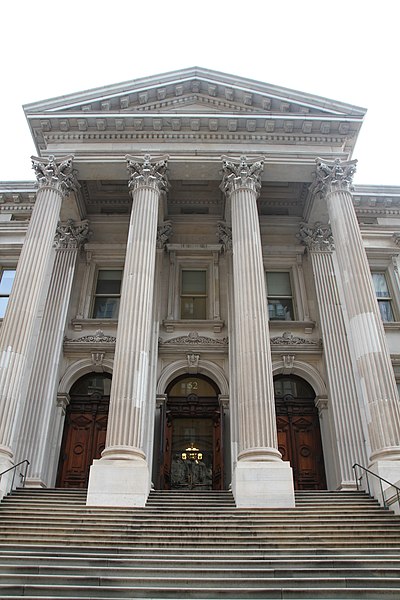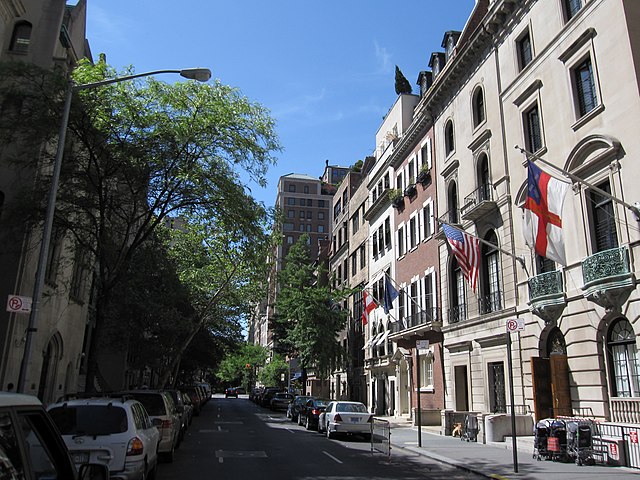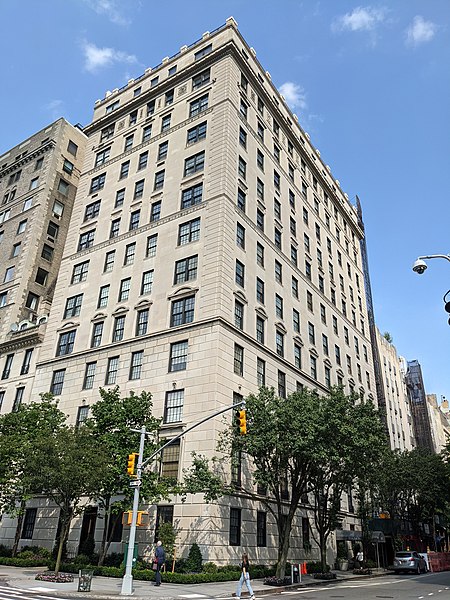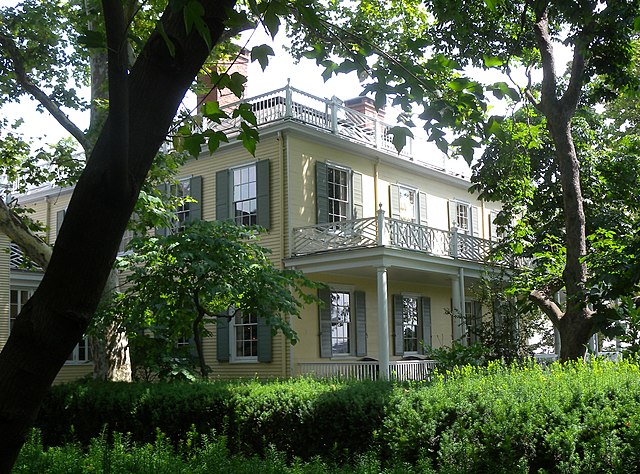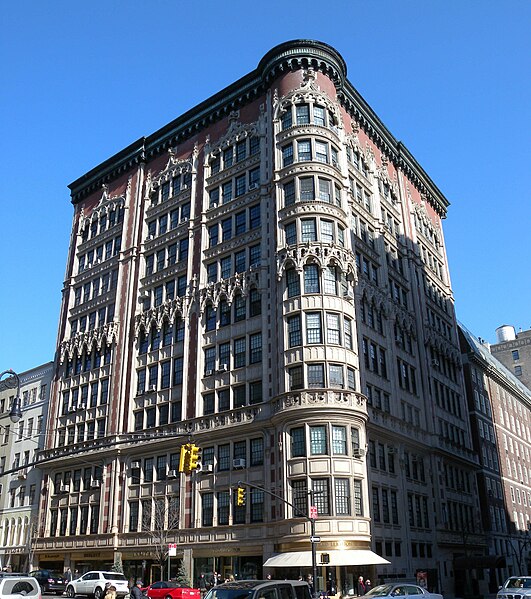Museum of the City of New York
The Museum of the City of New York (MCNY) is a history and art museum in Manhattan, New York City, New York. It was founded by Henry Collins Brown, in 1923 to preserve and present the history of New York City, and its people. It is located at 1220–1227 Fifth Avenue between East 103rd to 104th Streets, across from Central Park on Manhattan's Upper East Side, at the northern end of the Museum Mile section of Fifth Avenue.
The main facade of the museum, facing Fifth Avenue
The main entrance to the Tweed Courthouse, which was proposed as a new home for the museum
"The Bay and Harbor of New York" by Samuel Waugh (1814–1885), depicting the arrival of the Junk Keying in New York harbour in July 1847 (watercolor on canvas, c.1853–1855, Museum of the City of New York).
Henry Gurdon Marquand House Conservatory Window (around 1883–1884), designed by Richard Morris Hunt (1827–1895) and made by Eugène Stanislas Oudinot (1827–1889)
The Upper East Side, sometimes abbreviated UES, is a neighborhood in the borough of Manhattan in New York City, bounded approximately by 96th Street to the north, the East River to the east, 59th Street to the south, and Central Park and Fifth Avenue to the west. The area incorporates several smaller neighborhoods, including Lenox Hill, Carnegie Hill, and Yorkville. Once known as the Silk Stocking District, it has long been the most affluent neighborhood in New York City.
East 69th Street between Park and Madison Avenues in the Upper East Side Historic District
The Metropolitan Museum Historic District, designed in 1977
Gracie Mansion, the official residence of the Mayor of New York City and the city's last remaining East River villa
45 East 66th Street, a designated New York City landmark, as seen from Madison Avenue


